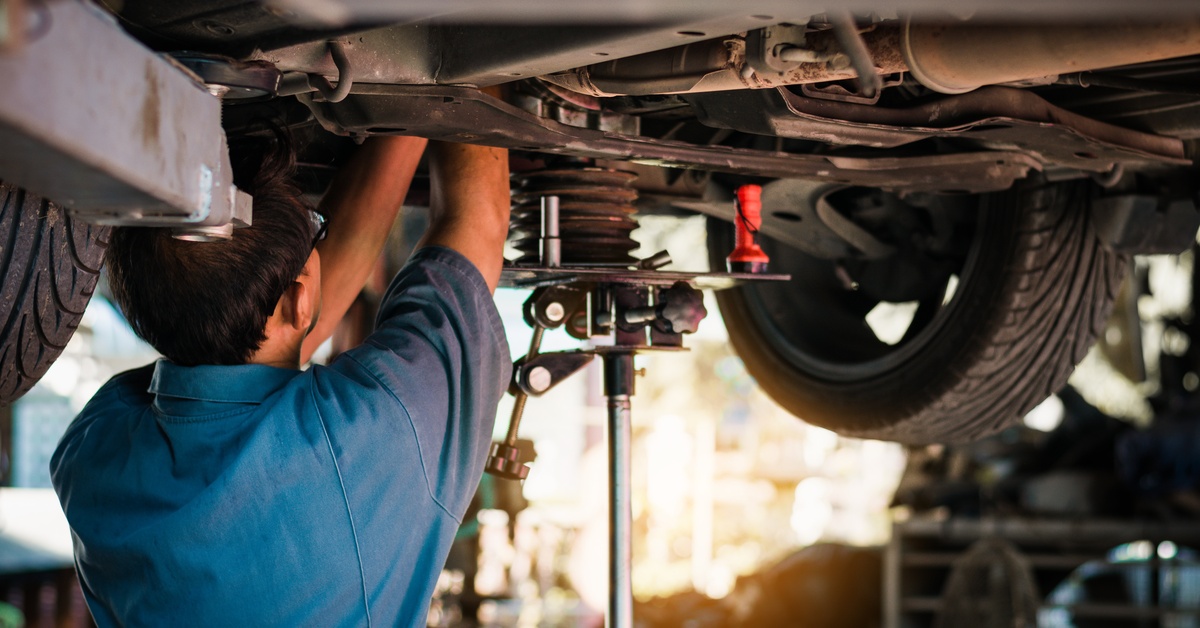Aftermarket parts are budget-friendly alternatives to name-brand Toyota components, but these parts can also weaken the structures in your vehicle. Aftermarket manufacturers reverse-engineer original parts to create their own versions, often using different materials and manufacturing processes to reduce costs. While the parts function similarly, they rarely achieve the same level of precision and reliability as genuine parts.
While the lower price of aftermarket components can be tempting, investing in original equipment manufacturer, or OEM, Toyota parts is smarter because they will outlast aftermarket parts. Install compatible components in your vehicle by learning the benefits of OEM parts.
Superior Quality and Materials
OEM parts come directly from Toyota’s manufacturing facilities. Toyota designs and builds these components with the same high-quality materials and exacting standards as the parts originally installed in your vehicle at the factory. This commitment to quality allows every OEM part to integrate flawlessly with your car’s existing systems.
The materials selected for OEM parts undergo extensive testing to verify their durability, heat resistance, and ability to withstand the stresses of daily driving. Toyota engineers choose these materials to guarantee optimal performance and longevity for each component within the vehicle’s structure.
Aftermarket manufacturers, on the other hand, prioritize cost reduction. These materials might look similar, but they frequently lack the structural integrity and resilience of their OEM counterparts. For example, an aftermarket brake pad might use a different friction compound that wears out faster or produces more dust than one from the automaker.
Similarly, a non-OEM water pump might use plastic impellers instead of metal ones, which makes it more susceptible to failure under high temperatures. This difference in material quality directly translates to a shorter lifespan and a higher risk of premature failure. By choosing OEM, you are investing in the same level of quality that matches your initial Toyota purchase.
Unmatched Precision and Fit

Toyota engineers its OEM parts with precision so that they fit your vehicle model. When a component fits as intended, it works alongside surrounding parts to maintain the vehicle’s optimal performance. For instance, an OEM alternator aligns perfectly with the engine block and pulley system so that the serpentine belt runs smoothly.
This precision also reduces the likelihood of installation errors, saving you time and money at the repair shop. A perfect fit means your vehicle operates as smoothly as it did when it first left the factory.
Aftermarket parts will fit multiple vehicle models using a “one-size-fits-most” approach that compromises precision. Since these parts do not use Toyota’s proprietary designs, they may have slight variations in dimension or shape, which can lead to automotive problems during installation and operation.
When you install an aftermarket component, a mechanic might have to drill new holes, add shims, or make other adjustments to force the part to fit. These modifications can create stress points, lead to vibrations, and cause premature failure of both the new part and adjacent components. An ill-fitting part can compromise your vehicle’s safety systems.
Rigorous Testing and Performance Standards
Every OEM Toyota part undergoes rigorous testing to meet strict performance and safety standards before it leaves the factory. Automakers subject components to extreme conditions that simulate years of real-world use.
Toyota rigorously tests each component under extreme heat conditions to confirm it functions reliably, even during sweltering environments or freezing winters. Engineers also simulate relentless vibrations to replicate the stresses of rough terrain and daily driving. To confirm the material’s strength, engineers place heavy loads on the parts and apply corrosive materials, such as salt and road grime, to evaluate the part’s resistance to wear and degradation over time.
Aftermarket parts, on the other hand, will not undergo the same stringent testing requirements. While some aftermarket manufacturers conduct their own quality control, their testing protocols are often less thorough than Toyota’s. As a result, an aftermarket part might perform adequately under normal circumstances but fail unexpectedly when subjected to stress.
This lack of rigorous testing means you are taking a gamble on the part’s reliability. Choosing OEM parts gives you the confidence that comes from knowing that engineers approve of the component and its features.
Enhanced Safety With OEM Toyota Parts
Unlike aftermarket alternatives, OEM parts undergo extensive safety testing under extreme conditions to verify their performance in real-world scenarios. For example, Toyota evaluates the durability of brake pads during simulated emergencies to guarantee reliable stopping power even in high heat or wet conditions.
Airbags with OEM components engage as designed to reduce the risk of delayed or incomplete deployment. This unwavering commitment to safety engineering gives you the peace of mind that your vehicle will protect you and your passengers in the event of an accident.
Preserving Resale Value

Using OEM parts for repairs and maintenance preserves your Toyota’s resale value. When it comes time to sell your vehicle, a well-documented service history featuring genuine Toyota parts demonstrates to potential buyers that you have cared for the car.
Prospective owners, especially those familiar with the brand, recognize the quality and reliability of OEM components. A vehicle with genuine parts can have a higher asking price in the used car market, which might offset the initial higher cost of the OEM parts over the vehicle’s lifetime.
Conversely, a vehicle with a mix of aftermarket parts can deter savvy buyers. An unreliable installation can lower the vehicle’s perceived value and make it more difficult to sell. Protect your long-term investment by installing OEM Toyota car parts that outlast aftermarket parts.
The Assurance of a Warranty
Toyota stands behind the quality of its products, typically offering a 12-month, unlimited-mileage warranty on genuine parts purchased and installed at an authorized dealership. This warranty protects you against defects in materials or workmanship. If an OEM part fails within the warranty period, Toyota will replace it at no cost to you.
To compare, the warranty coverage for aftermarket parts varies widely and is often less comprehensive. Some aftermarket parts may come with a limited warranty, while others have no warranty at all.
Even if the seller offers a warranty, navigating the claims process often feels complicated, and you may need to cover the labor costs for the replacement. OEM Toyota parts come with a trustworthy warranty that covers you in the rare event of failure. This delivers unmatched security and value that aftermarket parts rarely provide.
While many automotive components are easy to distinguish between OEM and aftermarket parts, partnering with a trusted supplier ensures that you receive the compatible and best-suited parts for your systems. At Yota Shop, our specialists provide Toyota car parts designed to withstand long, hazardous driving conditions. If you need to repair your vehicle, check out our website and browse our products today!

